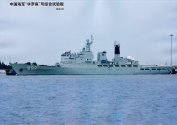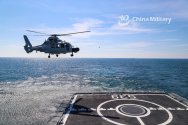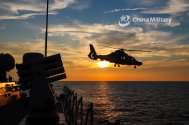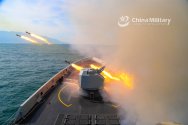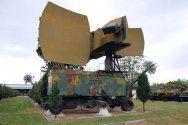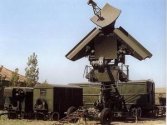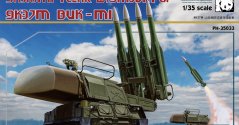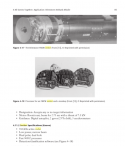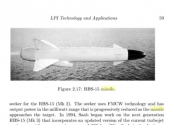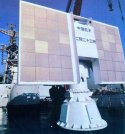For the sake of our other forum members, let’s first have the terminology clarified, to avoid further confusion.
CWI = Continuous Wave Illumination
ICW = Interrupted Continuous Wave
These are very different concepts. ICW systems are radars. CWI are not. Illuminators don’t have receiver electronics.
Further reading on FM (frequency modulated) ICW radar:
Furthermore, there are CW radars that use separate antennas for the transmit and receive roles, and therefore don’t suffer from interference.
Now, there are CWI radar systems that incorporate illuminators, and these are called ICWI. Among naval systems, the Dutch APAR is a well known example.
ICWI = Interrupted Continuous Wave Illumination.
ICWI and CWI differ insofar as the latter emits a continuous stream of RF radiation, whereas the former emits it with interruptions, time multiplexing between a number of targets. Neither receive the emitted signal back. If both systems would have the same transmitter, then CWI would deposit more energy on target than ICWI, and would therefore have higher theoretical range.
There is no time multiplexing between different targets. In fact the link you provided, doesn't show it. Instead formally it is a pulse radar because it has both transmit and receive cycles.
Frequency
Modulated
interrupted
Continuous
Wave,
FMiCW - Radar or also-called
iFMCW- Radar, radar gets a special position within the radar technologies. During the measuring process, the transmit signal is switched off temporarily. Formally, the radar is thus a
. During the shutdown of the transmitting antenna, the frequency generation in the transmitter, however, continues to operate and provides the receiver with the necessary for downconversion frequency. The measuring process for determining the distance is a measure of the frequency difference between the actual transmitter frequency and the carrier frequency of the echo signals as in an
. So it is not a pure runtime measurement similar to a pulse radar with
.
The shutdown process is equivalent to the receive cycle of the pulse radar and this can be used to extract range measurement.
The use of FMICW in AESA is because an AESA module has to share a single antenna element between Rx and Tx circuits, with the access to the element controlled by the circulator.
The interruption from transmit to receive in an ICW radar is similar to the duty cycle of a pulse radar. During the interruption phase of the ICW, the echo is being received.
The fact that a pulse radar attains much greater ranges than any CWI radar belies the importance of Rx Tx isolation over continued exposure. Simultaneous Rx and Tx in antenna creates interference and noise, which requires that the Rx echo has to be higher in order to overcome the interference from the Tx signal. This lessens the sensitivity and receive gain of the antenna.
To gain the advantages of isolation, CW or FMCW radars as they are called, use dual arrays, one transmit and one receive. Many FCRs were like that, and there are so many examples of earlier Soviet Cold War fire control radars that are this way. In fact, there are modern radars used for flight telemetry are still this way.
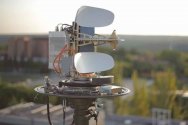
However, finding dual arrays CW radars to be bulky, the Soviets went with mono array designs, and this is where we see well known radars such as the Tombstone and Flaplid radars for the S-300 missile complex. As you have Rx and Tx on a mono-array, with increased noise and interference, the Soviets used FMCW or Frequency Modulated Continuous Wave, where "chirps" or peaks are added to the wave at certain intervals. This increased the signal to noise ratio to help overcome the interference. As CW is incapable of range measurement, the timing of the echoes of these chirps are used as markers for range measurement.
Soviet SAM fire control radars with target illumination are pure radars and they are not one way illuminators. They use the echoes to track the targets while the same echoes are used to illuminate the target for the missiles. This successful implementation led to the next generation of Soviet SAMs, which includes one relevant example, which is the Buk missile and its Fire Dome radar. Buk is navalized into the Shtil missile, and the Orekh "Front Domes" that illuminate for this missile carry over this working principle. So we arrived to the Sovremenny, then to the HQ-16, and then to the 054A.
So now we take a step further into AESA. You can have circuits that are transmit only, and circuits that are receive only, but to maintain the isolation principle, all the transmit elements would be in one array, and all the receive elements in a second array. We go back to the dual array. However these are dedicated CW radars. In the case of APAR, which is also a pulse radar, it would have circuits similar to this:
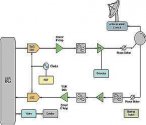
You got a Tx circuit with an HPA (High Power Amp). On the bottom you got the Rx circuit with an LNA (Low Noise Amp). The Circulator lets the Tx access the single antenna element during the transmit phase, then cuts it off to let the Rx access the antenna element during the receive phase.
What changes between Pulse to ICW on APAR is the waveform while still using the same circuit, with the same Tx Rx cycles. In ICW, the wave generator continues to generate the form internally even if it has no access to the antenna. By the time it can transmit again, the form of the wave remains as if it was not interrupted at all.
Because CW is namely about average power, with ICW, during pauses the circuit can build up power from capacitors and burst them during the transmit phase, much like a pulse radar. This is where FMICW comes in, and this further improves the signal to noise ratio.
With the echoes resembling that of a pulse doppler radar, a missile seeker working on pure CW has to be reworked for this new emitter.
But the most important part of why we will have a new HQ-16 variant and the new emitter panels are ICW is simply because of this.
SAST or Shanghai Academy of Spaceflight Technology are responsible for the systems design of the HQ-16 and its radars. You got an Interrupted Illuminating Radar Seeker right there in their webpage. Conveniently in the same picture showing the seeker in display, we got a Type 054A model right behind it!
Perusing the website further, you get this.
Which is the new generation HQ-16 targeting and guidance vehicle featuring dual band active arrays.
And then you have this, which is the HQ-16 itself. This is obvious that SAST is behind the missile.
Interesting enough, the webpage also has this 3D radar.
This radar has appeared on Test Ship 892 before. Test Ship 892 is also used to test the Dual Sided array and the new target illuminators on the same ship and on the same time.



